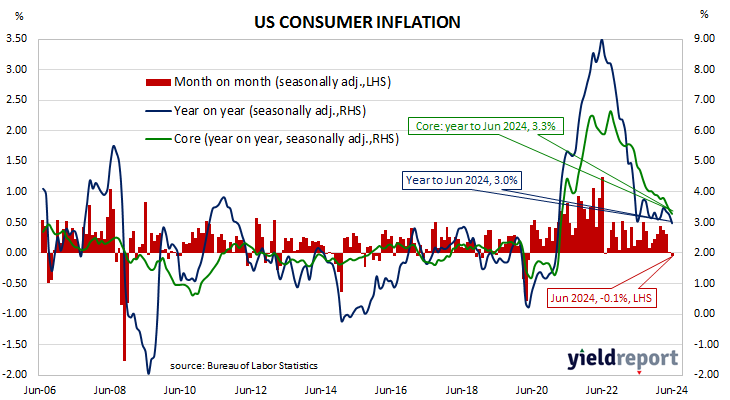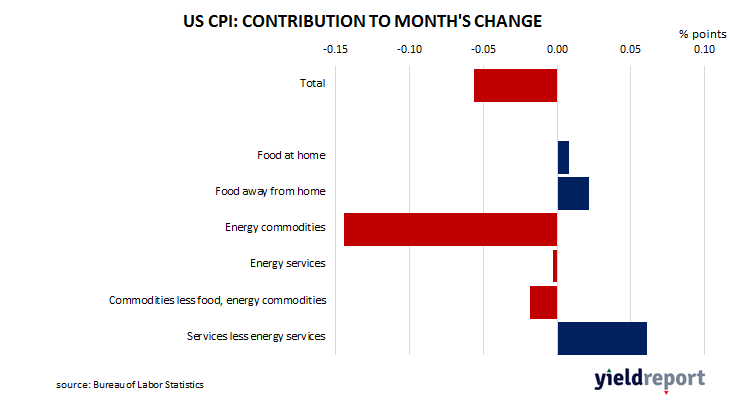Summary: US CPI down 0.1% in June, contrasts with expected rise; annual inflation rate slows from 3.3% to 3.0%; “core” rate up 0.1%, up 3.3% over year; Westpac: disinflationary impulse quickly gathering momentum; Treasury yields fall significantly; rate-cut expectations harden; energy prices main driver of overall result.
The annual rate of US inflation as measured by changes in the consumer price index (CPI) halved from nearly 3% in the period from July 2018 to February 2019. It then fluctuated in a range from 1.5% to 2.0% through 2019 before rising above 2.0% in the final months of that year. Substantially lower rates were reported from March 2020 to May 2020 and they remained below 2% until March 2021. They then rose significantly before declining from mid-2022 to mid-2023.
The latest US CPI figures released by the Bureau of Labor Statistics indicated seasonally-adjusted consumer prices declined by 0.1% on average in June. The fall contrasted with the 0.1% rise which had been generally expected and it was down from May’s flat result. On a 12-month basis, the inflation rate slowed from 3.3% to 3.0%.
“Headline” inflation is known to be volatile and so references are often made to “core” inflation for analytical purposes. The core prices index, the index which excludes the more variable food and energy components, increased by 0.1% on a seasonally-adjusted basis over the month, less than the 0.2% which had been generally expected. The annual growth rate slowed from May’s rate of 3.4% to 3.3%.
“The outcome suggests that the disinflationary impulse is quickly gathering momentum, supporting the case for US rate cuts in coming months,” said Westpac senior economist Pat Bustamante.
US Treasury bond yields fell significantly on the day. By the close of business, the 2-year Treasury yield had shed 10bps to 4.52%, the 10-year yield had lost 8bps to 4.21% while the 30-year yield finished 6bps lower at 4.42%.
In terms of US Fed policy, expectations of a lower federal funds rate in the next 12 months hardened, with nearly five 25bp cuts currently factored in. At the close of business, contracts implied the effective federal funds rate would average 5.31% in August, 2bps less than the current spot rate, 5.215% in September and 4.965% in November. June 2025 contracts implied 4.115%, 122bps less than the current rate.
The largest influence on headline results is often the change in fuel prices. Prices of “Energy commodities”, the segment which contains vehicle fuels, decreased by 3.7% and contributed -0.14 percentage points to the total. Prices of non-energy services, the segment which includes actual and implied rents, contributed 0.06 percentage points after they increased by 0.1% on average.



